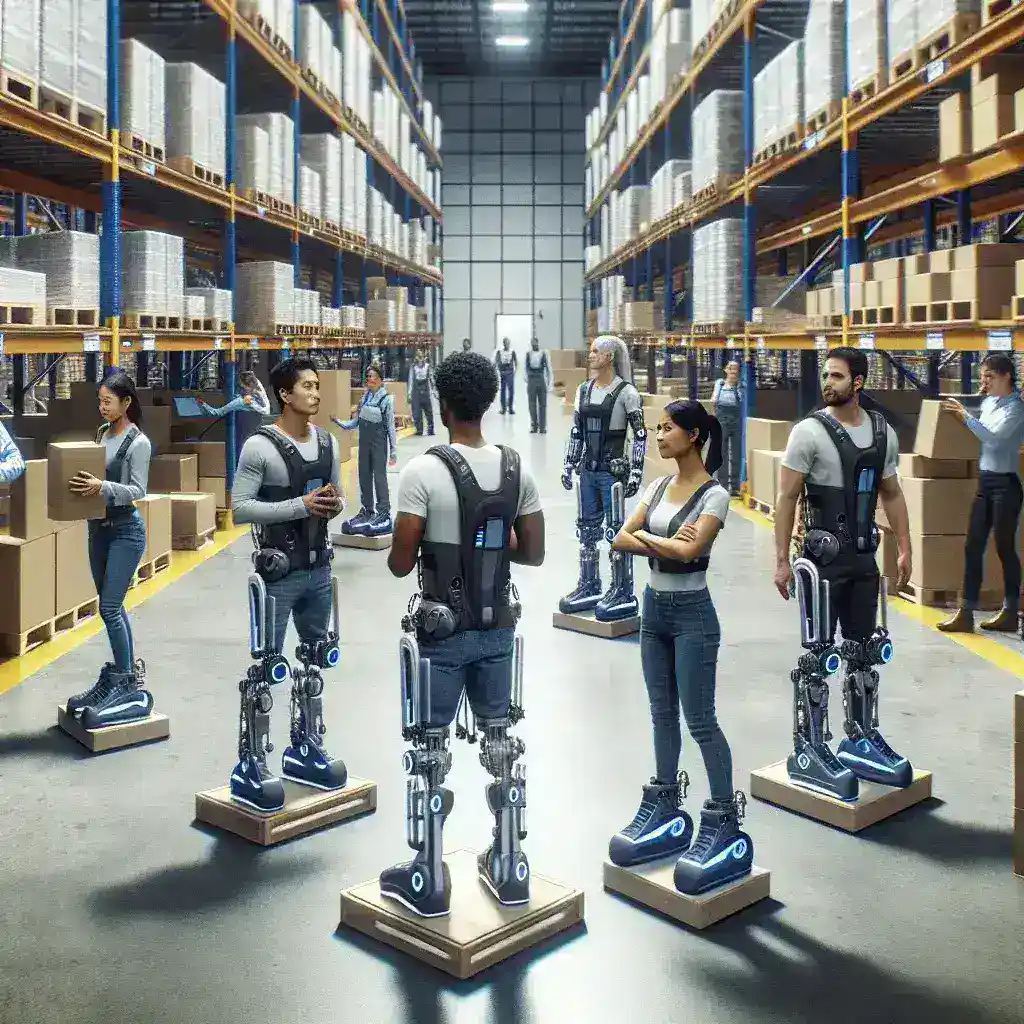Introduction
In recent years, the logistics and warehousing industry has faced significant challenges, particularly concerning employee safety and health. With increasing demands on efficiency and productivity, companies are seeking innovative solutions to mitigate risks associated with manual labor. One such pioneering solution is the deployment of exoskeleton wearables by UPS to enhance worker safety and reduce injuries in their U.S. warehouses.
Understanding Exoskeleton Wearables
Exoskeleton wearables are advanced robotic suits designed to assist workers by providing support during physically demanding tasks. These devices can enhance strength and endurance, allowing employees to lift heavier items with less strain on their bodies. This technology has gained traction across various industries, but its application within the warehousing sector is particularly noteworthy.
The Need for Exoskeletons in Warehousing
Warehousing work often requires repetitive motions, heavy lifting, and prolonged periods of standing or bending. As a result, injuries such as musculoskeletal disorders (MSDs) have become prevalent. According to the U.S. Bureau of Labor Statistics, MSDs accounted for over 30% of all workplace injuries in recent years. UPS’s initiative to deploy exoskeletons is a forward-thinking response to this pressing issue.
Benefits of Exoskeleton Wearables
- Enhanced Safety: By reducing the physical strain on workers, exoskeletons can significantly lower the risk of injuries.
- Increased Productivity: With less fatigue and fewer injuries, employees can work more efficiently, potentially increasing output.
- Improved Morale: Investing in worker safety can enhance job satisfaction, leading to lower turnover rates.
UPS’s Implementation Strategy
UPS has taken a systematic approach to integrating exoskeleton wearables into its operations. The company began pilot programs in select warehouses, focusing on specific tasks that are known to be injury-prone. Feedback from workers has been crucial in refining the design and functionality of these devices.
Phases of Deployment
- Research and Development: UPS collaborated with technology partners to develop tailored exoskeleton designs that meet the unique needs of warehouse workers.
- Pilot Testing: Initial trials were conducted in various facilities to gather data on performance, comfort, and overall effectiveness.
- Training and Support: Comprehensive training programs were established to ensure employees could effectively use the exoskeletons, maximizing their benefits.
- Full-Scale Integration: After successful pilot programs, UPS is looking to expand the use of exoskeletons across more locations.
Real-World Impact
Early results from UPS’s pilot programs have shown promising outcomes. Employees reported decreased fatigue and a lower incidence of injuries, proving that exoskeleton wearables can make a tangible difference in the workplace. Additionally, anecdotal evidence suggests that workers feel more valued and appreciated when their safety is prioritized.
Expert Insights
Industry experts have praised UPS’s initiative. Dr. Emily Harrington, a leading occupational safety researcher, stated, “The implementation of exoskeletons in warehouses is a game-changer. It not only protects workers but also enhances productivity, creating a win-win situation for both employees and employers.”
Future Predictions
The future of warehousing could be significantly transformed by the continued adoption of exoskeleton technology. As more companies recognize the advantages of investing in worker safety, we may see a widespread shift toward automated solutions and ergonomically designed work environments.
- Potential Industry Standard: Exoskeletons might become a standard safety measure across warehouses, similar to the adoption of personal protective equipment (PPE).
- Advancements in Technology: Ongoing research may lead to even more sophisticated designs, incorporating AI and machine learning to adapt to individual worker needs.
- Global Expansion: As UPS leads the way, other logistics companies may follow suit, creating a safer global workforce.
Challenges and Considerations
While the benefits of exoskeletons are evident, challenges remain. The initial investment in technology and training can be substantial. Additionally, ensuring that wearables are comfortable and do not hinder movement is crucial for employee acceptance. UPS must continue to address these challenges to maximize the effectiveness of its deployment.
Comparative Analysis
Compared to traditional safety measures, exoskeletons offer a proactive approach to injury prevention. While PPE primarily protects workers from external hazards, exoskeletons focus on reducing the physical toll of labor itself. This shift in focus may redefine workplace safety standards in the years to come.
Cultural Relevance
UPS’s initiative reflects a broader cultural shift towards prioritizing employee wellness and safety. As the conversation around workplace health evolves, companies will need to adapt to maintain a competitive edge. By embracing innovative solutions like exoskeletons, UPS is setting a precedent for others in the industry.
Conclusion
UPS’s deployment of exoskeleton wearables in U.S. warehouses marks a significant advancement in workplace safety technology. By investing in the health and well-being of its employees, UPS not only enhances productivity but also fosters a culture of care and respect within its workforce. As the logistics industry continues to evolve, the successful implementation of exoskeletons may pave the way for future innovations aimed at improving worker safety across the globe.

